Citations
Notes
Related Research Articles

The January Uprising was an insurrection principally in Russia's Kingdom of Poland that was aimed at putting an end to Russian occupation of part of Poland and regaining independence. It began on 22 January 1863 and continued until the last insurgents were captured by the Russian forces in 1864.
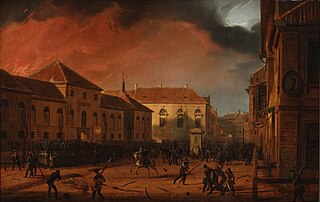
The November Uprising (1830–31), also known as the Polish–Russian War 1830–31 or the Cadet Revolution, was an armed rebellion in the heartland of partitioned Poland against the Russian Empire. The uprising began on 29 November 1830 in Warsaw when young Polish officers from the military academy of the Army of Congress Poland revolted, led by Lieutenant Piotr Wysocki. Large segments of the peoples of Lithuania, Belarus, and Right-bank Ukraine soon joined the uprising. Although the insurgents achieved local successes, a numerically superior Imperial Russian Army under Ivan Paskevich eventually crushed the uprising. The Russian Emperor Nicholas I issued the Organic Statute in 1832, according to which, henceforth Russian-occupied Poland would lose its autonomy and become an integral part of the Russian Empire. Warsaw became little more than a military garrison, and its university closed.
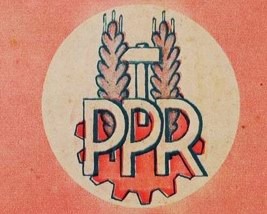
The Polish Workers' Party was a communist party in Poland from 1942 to 1948. It was founded as a reconstitution of the Communist Party of Poland (KPP) and merged with the Polish Socialist Party (PPS) in 1948 to form the Polish United Workers' Party (PZPR). From the end of World War II the PPR led Poland, with the Soviet Union exercising moderate influence. During the PPR years, the centers of opposition activity were largely diminished, and a socialist system was established in the country.

Tytus Aureliusz Chałubiński was a Polish physician, naturalist, and co-founder of the Polish Tatra Society. His collections of natural history specimens are now held in the Tatra Mountains Museum in Zakopane.

Romuald Traugutt was a Polish military officer and politician who served as the last dictator of the January Uprising.

The Vilnius Uprising of 1794 began on April 22, 1794, during which Polish-Lithuanian force led by Jakub Jasiński fought Russian forces occupying the city during the Kościuszko Uprising. The Russians were expelled from Vilnius, and thanks to Jasiński's skill, no casualties were sustained during the bloodless uprising. Vilnius townspeople also actively participated in the city's defense from the Russians, some even by throwing stones at them.
Administrative Council was a part of Council of State of the Congress Poland. Introduced by the Constitution of the Kingdom of Poland in 1815, it was composed of 5 ministers, special nominees of the King and the Namestnik of the Kingdom of Poland. The Council executed King's will, ruled in the cases outside the ministers competence and prepared projects for the Council of State.
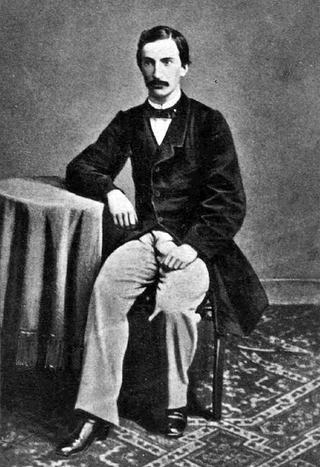
Stefan Bobrowski was a Polish politician and activist for Polish independence. He participated in the January 1863 Uprising as one of the leaders of its "Red" faction and as a member of that faction's Central National Committee, and of the Provisional National Government.
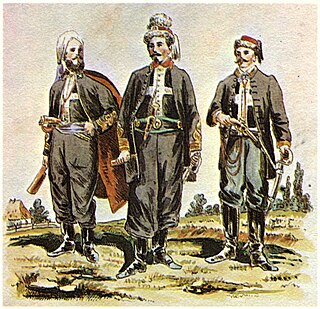
Zouaves of Death were a Polish military unit during the January Uprising, formed in February 1863 from volunteers in Ojców, Poland, by the Frenchman François Rochebrune. He based his formation on the French Zouaves, in which he had served during the Crimean War. The Zouaves of Death were highly regarded for their bravery, but they suffered high casualties and their numbers were severely depleted within months. The unit ceased to exist when the rebellion was defeated in 1864. After the fighting in Poland, Rochebrune returned to the French army, as a captain and later colonel.

The Battle of Grochowiska took place on 18 March 1863 at the village of Grochowiska near Pińczów, Poland during the Polish January Uprising against the Russian Empire. It involved a 3,000-strong unit of Polish insurgents under the command of Marian Langiewicz which had been cornered by Russian forces numbering around 3,500 soldiers and six artillery pieces. It was one of the most bloody, as well as one of the largest battles of the Uprising.

The Battle of Pieskowa Skała, one of many skirmishes of the January Uprising, took place on 4 March 1863 near Pieskowa Skała in southwestern corner of Russian-controlled Congress Poland. A party of Polish insurgents commanded by Marian Langiewicz, heading towards the border with Galicia, clashed with units of the Imperial Russian Army.

The Battle of Skala, one of many skirmishes of the January Uprising, took place on 5 March 1863 near the town of Skała in the southwestern corner of Russian-controlled Congress Poland. A party of 1,500 Polish insurgents commanded by Marian Langiewicz and Antoni Jezioranski, heading towards the border with Austrian Galicia, clashed with a 400-strong unit of the Imperial Russian Army. The Poles, who had a numerical superiority, managed to defeat the enemy.
The Battle of Chroberz, one of many skirmishes of the January Uprising, took place on March 17, 1863, near the village of Chroberz in southwestern corner of Russian-controlled Congress Poland. A party of 3000 Polish insurgents commanded by Marian Langiewicz, clashed with units of the Imperial Russian Army. The Poles managed to defeat the enemy, with heavy losses on both sides.
The Battle of Igolomia, one of many skirmishes of the January Uprising, took place on 21 March 1863 near the village of Igolomia in southwestern corner of Russian-controlled Congress Poland. Polish forces under Jozef Smiechowski clashed with the troops of the Imperial Russian Army.
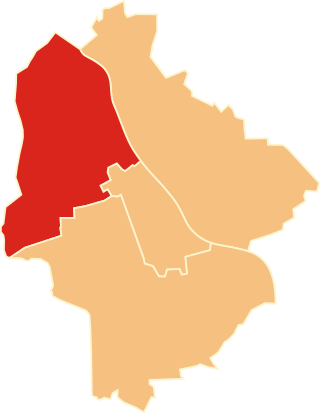
The North Warsaw County was a county within the city of Warsaw. It existed from 1928 to 1939, and from 1944 to 1960, as a county of Warsaw, that functioned as the voivodeship. From 1928 to 1939, it was under the administration of the Second Polish Republic, from 1944 to 1945, under the Provisional Government of the Republic of Poland, from 1945 to 1947, under the Provisional Government of National Unity, and from 1947 to 1960, under the Polish People's Republic.

The South Warsaw County was a county within the city of Warsaw. It existed from 1928 to 1939, and from 1944 to 1960, as a county of Warsaw, that functioned as the voivodeship. From 1928 to 1939, it was under the administration of the Second Polish Republic, from 1944 to 1945, under the Provisional Government of the Republic of Poland, from 1945 to 1947, under the Provisional Government of National Unity, and from 1947 to 1960, under the Polish People's Republic.

The Warsaw Downtown County was a county within the city of Warsaw. It existed from 1931 to 1939, and from 1944 to 1960, as a county of Warsaw, that functioned as the voivodeship. From 1931 to 1939, it was under the administration of the Second Polish Republic, from 1944 to 1945, under the Provisional Government of the Republic of Poland, from 1945 to 1947, under the Provisional Government of National Unity, and from 1947 to 1960, under the Polish People's Republic.
The National Civil Government was the short-lived supreme authority of the Polish rebel state during the January Uprising. It existed from 12 March to 21 March 1863, temporarily replacing the Provisional National Government. It functioned alongside the Dictator Executive Commission in Warsaw, both de jure under the rule of dictator Marian Langiewicz.

The Battle of Lipniszki took place on 27 May 1794 during the Polish uprising led by Tadeusz Kościuszko. The battle ended in a Russian victory under the leadership of Bennigsen, who fought in it against the divisions of Jasiński and Chlewiński.
References
- ↑ Piotr Greiner, Ewa Gronkowska, Ryszard Kaczmarek, Kazimierz Miroszewski, Marek Paździora: Słownik historii Polski i świata. Katowice, 2001, p. 157.
- 1 2 Andrzej Garlicki: Historia 1815-1939, Polska i świat, Warsaw 1998, p. 116.
- 1 2 Andrzej Szwarc, Marek Urbański, Paweł Wieczorkiewicz: Kto rządził Polską? Nowy poczet władców-od początków do XXI wieku, Warsaw, 2007, p. 546.
- ↑ Andrzej Zahorski, Stefan Kieniewicz, Władysław Zajewski: Trzy powstania narodowe, Warsaw, 1992, p. 364.
- 1 2 Andrzej Biernat, Ireneusz Ihnatowicz: Vademecum do badań nad historią XIX i XX wieku, Warsaw, 2003.
- ↑ Stefan Kieniewicz, Andrzej Zahorski, Władysław Zajewski: Trzy powstania narodowe, Warsaw, 1992.